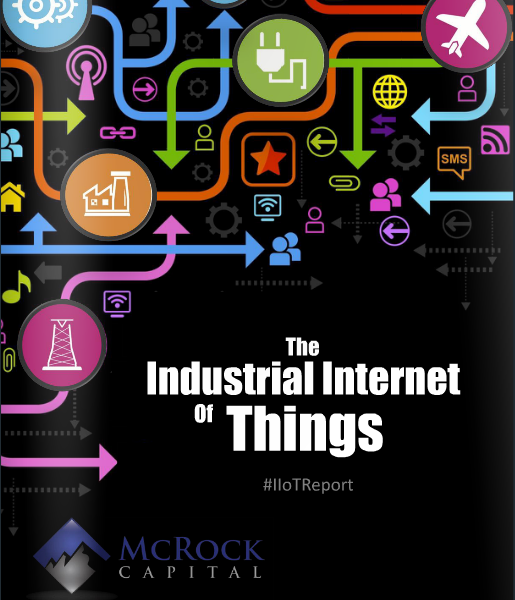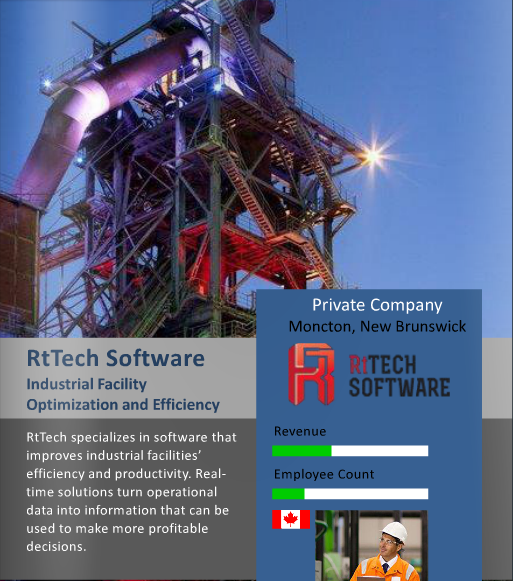A new report prepared by Toronto’s McRock Capital dove into Industrial Internet of Things (IIoT) industry, detailing several large companies leading the charge in investing in its future, as well as some real-life applications.
Most interestingly might have been where Cisco’s CEO pegged the Internet of Things at a $19 trillion market. Briefly, the IIoT is connecting the physical world of sensors, devices and machines with the Internet and, by applying deep analytics through software, is turning massive data into powerful new insight and intelligence. A rudimentary example for the Internet of Things revolves around how retail shopping centres can gain better insights about customer behaviour by installing dozens of sensors around a grocery store, for example. Now the store can find out in what patterns the shoppers are going, how long they’re spending in each area, etc. It’s all very powerful information for merchants.
Specifically with the “Industrial” IoT though, this focuses more around how physical devices can help out with sectors like oil and gas, where sensors, data management, advanced analytics and automation are being used to unlock production, reduce operating costs and optimize assets.
Some of the highlights of the report included:
Paul Howarth, a senior manager at Cisco, explained how only 1 percent of the world’s devices are connected today. “This creates an obvious opportunity for those that want to connect all those devices but it’s also a great opportunity for a number of new businesses to be created that can help industries derive value from all of the new data that will be available.”
In support of the vision of connecting people, processes and things, Cisco recently announced four global IoE Centres of Excellence at CES in January, including one in Cisco Canada’ new Toronto headquarters opening in 2015.
Meanwhile, Shell Technology Ventures’ Henrik Holland explained the “Digital Oil Field”, or as Shell terms it, the Smart Field. The Smart Field is where operators, partners and service companies seek to take advantage of improved data and knowledge management, enhanced analytical tools, real-time systems and more efficient business processes.
Austin, Texas’ Ayata Prescriptive Analytics processes vast amounts of data – video, images, sounds, text and numbers, to reveal what is expected ahead. They work with Apache Corp, which uses thousands of Electrical Submersible Pumps (ESPs) to pull oil from reservoirs – but many ESPs fail unpredictably, resulting in missed production targets. “Just a 1 percent improvement in global pump performance would provide over a half a million barrels of oil a day- that’s $19 billion per year,” said Apache.
Calgary’s Pure Technologies uses IIoT to for inspection, monitoring and management of physical infrastructure including water and hydrocarbon pipelines. Pure’s Acoustic Fiber Optic Sensor system detects and alerts operators of deteriorating concrete water pipelines, which can help avoid costly and dangerous pipe bursts.
General Electric has been a leader in IIoT as well: a couple of years ago it opened a new Global Software Center headquartered in San Ramon, California and committed $1 billion over a three year period to deliver on a vision for the Industrial Internet. GE uses a software platform called Predix, which enables asset and operations optimization by providing a standard way to run industrial-scale analytics and connect sensorized machines, data, and people.
Awesense is a Vancouver-based company that uses analytics to provide “True Grid Insight” on high risk segments of the distribution grid. Situational awareness using secure wireless current sensors identify losses and overloaded lines that impact business performance. Utilities are faced with more than $200 billion in annual electrical losses and theft, and Awesense brings visibility to an otherwise invisible network.
Finally, Moncton’s RtTech Software operates in the advanced manufacturing realm. It’s software improves industrial facilities’ efficiency and productivity. Real-time solution turn operational data into information that can be used to make more profitable decisions.
The report actually detailed several more innovative solutions, both in Canada and the US, revolving around IIoT. You can check the nicely put-together paper here.



